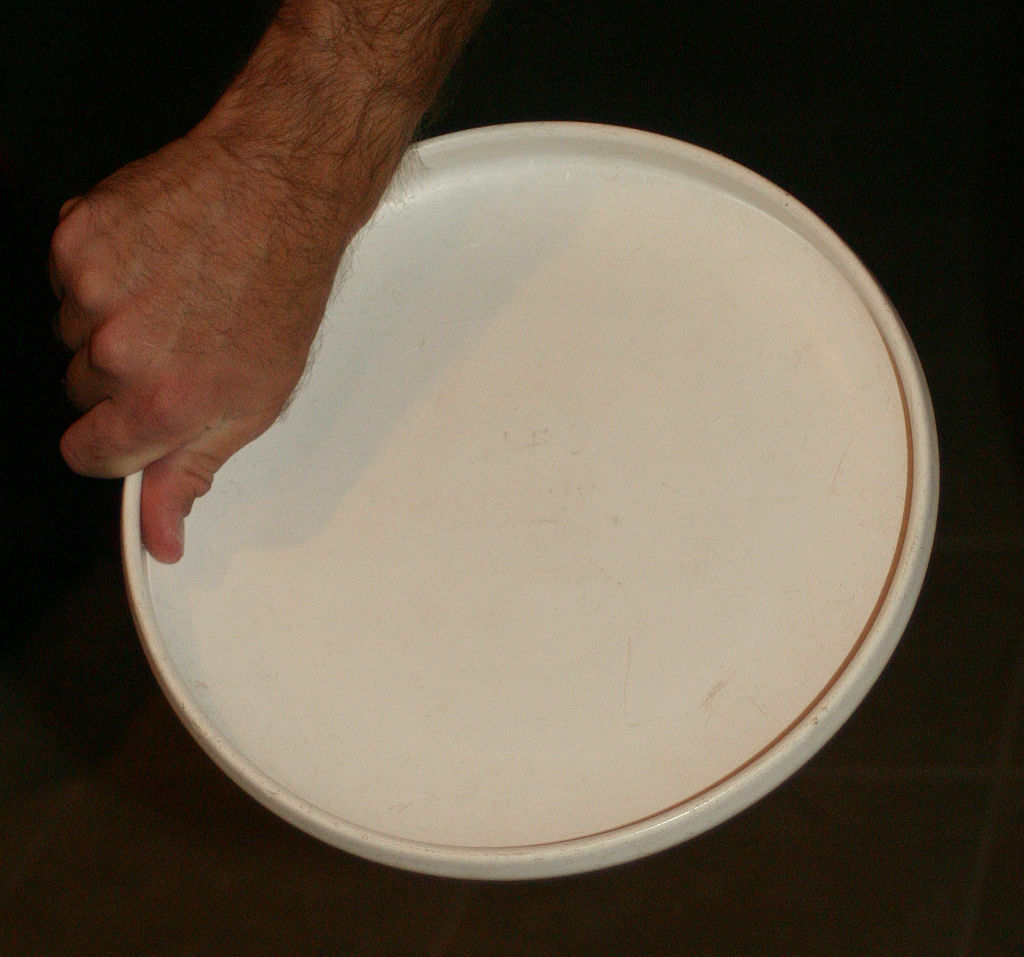by Brock Fitzgerald
Bill Nye the Science Guy once said, “The flying disc is a wonderful thing.” Although mostly known for his bowties and children’s science series, Nye was also heavily involved as an Ultimate Frisbee player in the 1970s. Not only did he play on Cornell’s competitive team during his years there, he would then go on to be a founder and captain of the Seattle Olympic Windjammers, the very first men’s team in Seattle. What is it about this game that interests so many? Perhaps it is the honor of the game in its unassuming nature, or possibly the way the game is organized. No matter what is it, although simple on the outside, Ultimate Frisbee is a game with many tactics, strategies, and intangible qualities.
There is dispute over where and how the Frisbee, or flying disc, came to be. The strongest theory claims that the first idea of a “disc” came in the early 1900’s, when a group of undergraduate students started throwing a pie plate that came from the nearby Frisbie Pie Company on the Yale campus. Until 1948, when the first plastic disc was invented, it is fairly fuzzy as to how the Frisbee advanced or how it was used; however, Fred Morrison’s creation of the first Frisbee set off the first mass production of the “Pluto Platter” in 1951. By 1954, people were ready to make this anomaly competitive; that year, students at Dartmouth arranged a tournament and dubbed the sport “Guts.” Later, in 1959, one year after the closing of Frisbie Pie Company, Wham-O Toy Company trademarked the “Frisbee.” Since then, universities, independent teams, and eventually professional teams introduced the world to the game of Ultimate.
On the offensive side of the disc there are two main positions: handlers and cutters. The handlers are responsible for managing the Frisbee, and cutters are used to move the disc up field. There are two kinds of cutters: strikers, who are just like the strikers in soccer, specializing in long cuts up field, and poppers, whose strong suit is finding the gaps in the defense in the short game. Motion of the offense is the key to winning and staying a pace ahead of the defense. By forming a “stack,” cutters make two lanes for up field passes. The 4-5 cutters will line up either vertically or horizontally up or across the field generally 10-15 yards in front of 2-3 designated handlers; whoever stands at the back of the line will either break towards or away from the handler with the disc, then make another cut, again either towards or away from the handler, in an attempt to create space between him or her and their defender. The handlers swing the disc between each other trying to find an open man; once the handler finds him or her, they follow their throw up field and allow the cutter to dump the disc back to them; the stack reforms and starts again. However, the stack will mainly only work if the opponent is playing a man-to-man defense. Resisting a zone is much different, as we will see.
Defensive strategies differ relative to the conditions of the game—current score, opponent’s skill, even weather. The two main positioning strategies, just like in other sports, are man-to-man or a zone. The man-to-man is plainly speed vs speed, cut vs cut, height vs height. If you knew that your opponent was faster than your team or had a generally greater vertical, it would be smart to transition to a zone defense. This type of play usually takes the form 3-3-1 (called the cup) or 1-3-3 (called the rabbit wall). The idea behind the 3-3-1 is the front three will make a cup around the handler with the disc and look to deflect/intercept/shut down any short cuts, while the middle three and back one protect against the deep threat (normally referred to as “the huck”). 1-3-3 zone in run similarly, the front one guards the handler holding the disc while the middle three shut down the sidelines and short passes and finally the back three protecting against the huck. However, there are dangers to running a zone. If your opponent understands how you are trying to shut them down and can adjust, they will be able to find the holes in your zone quickly and move up field in fast transitions, which is a zone’s worst enemy. Also, while in a 3-3-1, the front three must be careful not to violate the double guarding rule that states only one defender may cover a handler within a 10 foot radius. Overall, though, if the defense understands the keys to running a zone it can be very effective. For example, I played in a tournament this summer with a team built on speed, able to outrun any of our opponents; unfortunately, when we started playing the upper-level, out-of-state teams they knew how to shut down this advantage and we did not know how to counter. Our quickness allowed us to jump to a surprising 3-0 lead right out of the gate, but their adjustment to a zone answered our ability to beat them on the ground. The way to defeat a zone on offense is to be spread out. Nothing is easier on defense when you have 3 cutters in your vicinity; this allows you to defend all 3 without even moving. Obviously, we did not do this well enough, losing 8-15.
Now, no matter what type of defense you play, there are strategies within the strategies that help effectively collapse the offense. The greatest of these is directional pressure; like all tactics in ultimate this depends on the conditions: opponent handlers with preferred throws or throwing arm, strong strikers on the sidelines, or poppers who are stronger in the middle; however, forcing direction, more than any other defensive method, depends on the weather. If there is a strong crosswind, defenses will force the handlers onto the downwind sideline, so they are forced to throw upwind in order to play the disc in the middle of the field. A headwind would call for pressure on the lines to force throws to the center of the field, directly into the wind. Tailwinds are generally the same as defending with no wind. Now, as an offense, you’d obviously want to stay out of those situations, so how would you do that? As always, the offense is all about movement, both of cutters and the disc. Even if that means giving what the defense gives you, moving the disc enough will eventually lead to a gap in the defense and an opportunity to score.
One of the keys to the development and strategy of Ultimate is integrated in the movement of this disc itself, and by that I mean the throws. These days, the pros chuck the disc in a number of ways: backhand, forehand, hammer, thumber, scoober, and the high release backhand. Each one of these has a different flight pattern and is used in different situations, and each player will have his strengths in each. A fascinating part of the game is the decision making of a handler as he or she makes his or her throw. Backhands and forehands can be used for any distance and are usually the most accurate of the 6 main tosses. In a way, these two are opposite each other in their flight pattern, depending on how they are thrown. Similarly, the hammer and the thumber are opposite each other; used for mid-distance passes over the top of the defense, these will both result in the disc flying upside-down. The scoober, though oddly named, is one of the most common throws that go back and forth between handlers. It could be considered a sort of inverted, high release forehand, but the easiest way to think about it is as a very short-range hammer, useful for getting over immediate defenders. However, when a soft, lofty, short throw is needed, there is the high release backhand—just like a backhand, but allows for the disc to catch more air and float around defenders.
There are more “throws” manipulated by amateurs, but rarely used in professional games due to their inability to be controlled and stabilized. Although knowing and mastering the main throws is vital to being a handler, the understanding part is even more important to the cutters and defenders, who must be able to “read” a disc, or in other words, predict its flight pattern. The most common mistake in receiving or defending a pass is misreading. Mastering this takes a great deal of experience and knowledge of each individual throw and its general flight pattern, although every time it will be different. A player must take into account the wind, speed, angle, and power of the disc. Due to the science behind the Frisbee – aerodynamics, air resistance, etc. – the throwing and reading portion of Ultimate become just as important as the ground tactics.
Perhaps the greatest, most important part of the game is not something that can be taught, but seems to happen flawlessly with any team. That is the virtue of unity. Ultimate, unlike any other sport, is played with a sort of bond that creates a seamless chemistry between players, no matter the diversity. Recently, a striker for the Kenyan National Ultimate Frisbee Team, Clement Masakhwe, has said, “Our country’s major undoing has been opposing political stances that fuel ethnic animosity. But you can see from our local ultimate club that people of different ethnic backgrounds, age, and economic status have come together to form a very cohesive team with great ambitions.” This is a powerful illustration as to how a simple plastic disc can amalgamate a group of people with very different backgrounds, even in a place like Kenya. Each of the 7 local players on the Kenya National Team is from a different tribe and have all lived through very violent times in Kenyan politics, yet they form excellent harmony as a team.
Evidently there is a largely important part of the game that just comes from the comradery, and often that goes beyond just chemistry on the pitch. How does this come about so prevalently in Frisbee but not in many other sports? Ultimate is a sport that is self-ruled, meaning there are no referees, and it relies on the honor system, even at the professional level. There are on-field judges called “observers” who are there to clarify if there is a disagreement over a call, but generally players are responsible for calling their own fouls, in/out of bounds, and so on. This type of play puts a new spin on the term “spirit of the game.” Other American or International sports seem to intend a wild spirit and emotion stoked by the intensity of the game; Frisbee has that aspect, but more than that it is a true expression of the love of game. Anyone who plays will generally just be happy with playing and not be picky and selfish about winning. This allows for clean games with both teams congratulating the other without any grudges, no matter the outcome. The unity needed to be successful as a team and the attitude towards the game make it a redeeming professional sport in a way.
Thankfully it still maintains its reputation of being a true gentlemen’s game, run by an honor system. I am continually fascinated by this sport and think that anyone who is interested in athletics at all should attempt to become involved. During a reunion for Cornell Ultimate, after he jogged to the sidelines for a sub, Bill Nye told his teammates, “This is still the best game; it’s just the best game.”
[divider]
About the Author: “I am a student at Alaska Pacific University as a high school senior in the Early Honors Program. After graduating high school I plan to move onto a PreMed degree at Montana State University. As they would say, I am a born and raised Alaskan, having lived in AK for all 17 years of my life. A few of my passions are running, XC skiing, and ultimate Frisbee. I have been raised in the Christian church, most of that time attending Changepoint in Anchorage. Writing about my beliefs and scripture has become a large interest, especially over the last year. In my writing I try not to seem closed-minded and offensive but am not apologetic for the stances I take. I have two brothers [11 and 22], my dad is a pilot for Alaska Airlines and for The Air National Guard, and my mom is a full time mother.”







One Comment
Jackson P
Brock! Imagine that, about ultimate! 😉
But to be real that was an awesome story. Bill Nye, the man! I love him and he was a player! All the different components on this story were great; Great opener, Detail about the game, and examples with the Kenyan team. Who know Ultimate was so complicated!